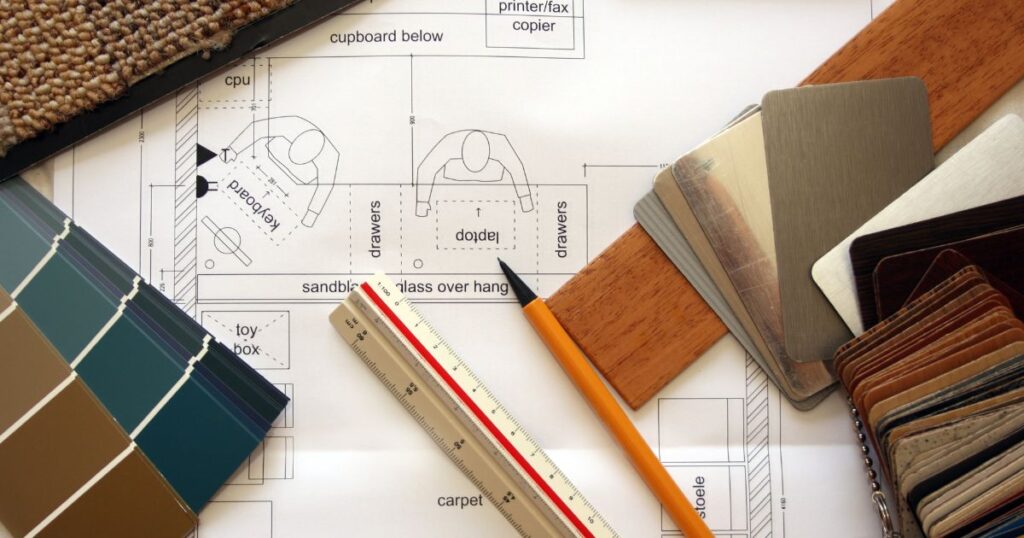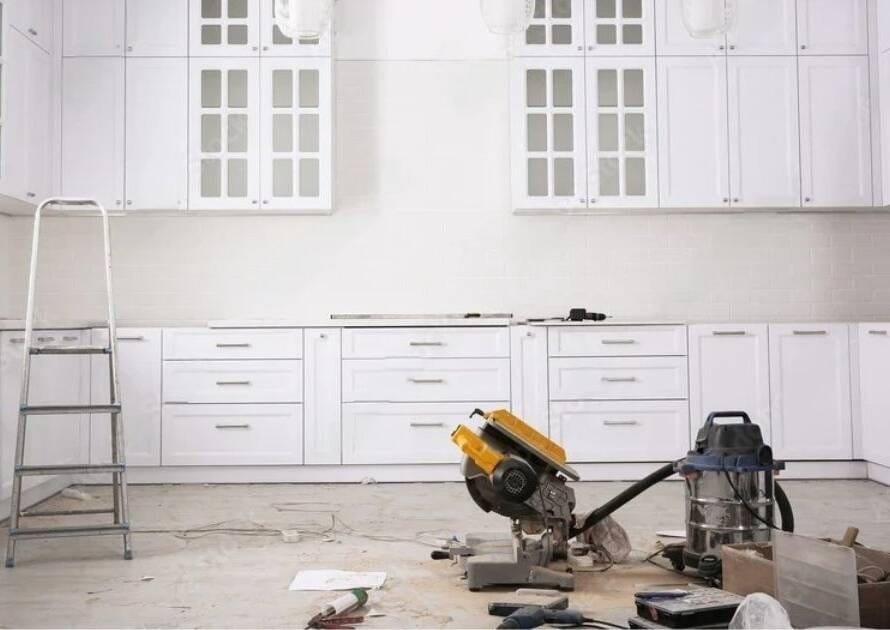Embarking on a home renovation project can be an exciting yet daunting task. Whether you’re updating a single room or overhauling your entire living space, proper planning is the cornerstone of a successful renovation. Many homeowners underestimate the importance of thorough preparation, often leading to costly mistakes, delays, and unnecessary stress.
A well-planned renovation is more than just a wish list and a budget. It’s a comprehensive strategy that considers every aspect of the project, from initial concept to final touches. By investing time and effort in planning, you can save significant amounts of money, avoid common pitfalls, and ensure that your vision becomes a reality with minimal disruption to your daily life.
In this guide, we’ll walk you through the essential steps to plan your home renovation effectively. We’ll cover everything from setting clear goals and establishing a realistic budget to choosing the right professionals and managing the project timeline. By following these key steps, you’ll be well-equipped to transform your living space efficiently and create the home of your dreams.
Assess Your Needs and Set Clear Goals

Before diving into the exciting world of color swatches and furniture catalogs, it’s crucial to take a step back and carefully assess your needs. This initial phase of planning sets the foundation for your entire renovation project.
Identify the Purpose of the Renovation
Start by asking yourself why this renovation is necessary. Are you looking to increase living space to accommodate a growing family? Perhaps you’re aiming to improve the overall aesthetics of your home to boost its market value. Or maybe you’re focusing on enhancing functionality to better suit your lifestyle. Understanding the core purpose of your renovation will guide all subsequent decisions and help you stay focused throughout the process.
For instance, if your primary goal is to create a more energy-efficient home, your choices in materials, appliances, and even structural changes will be significantly different from a renovation aimed purely at updating the style of your interiors.
Set Specific Goals
Once you’ve identified the overarching purpose, it’s time to break it down into specific, actionable goals. Instead of a vague idea like “update the house,” define clear objectives such as:
- Adding a bedroom to accommodate a new family member
- Upgrading the kitchen with modern appliances and increased counter space
- Creating an open-plan living area by removing non-load-bearing walls
- Installing energy-efficient windows throughout the house
These specific goals will help you communicate your vision more effectively to contractors and designers, ensuring everyone is on the same page from the start.
Prioritize Renovation Areas
With your goals in place, the next step is to prioritize which areas of your home need the most attention. This prioritization is crucial, especially if you’re working with budget constraints or planning to renovate in phases.
Consider factors such as:
- Which areas are most in need of repair or updating?
- Which renovations will add the most value to your home?
- Which changes will have the biggest impact on your daily life?
For example, you might decide that modernizing an outdated kitchen takes precedence over redecorating bedrooms, as it will significantly improve both your home’s functionality and its resale value.
By thoroughly assessing your needs, setting clear goals, and prioritizing your renovation areas, you create a solid framework for your project. This clarity will not only guide your decisions throughout the renovation process but also help you communicate your vision effectively to professionals, ensuring your home renovation aligns perfectly with your expectations and lifestyle needs.
Establish a Realistic Budget

One of the most critical aspects of planning a home renovation is establishing a realistic budget. A well-planned budget not only helps you manage your finances effectively but also guides your decision-making throughout the project.
Determine Your Budget
Calculating your total budget involves more than just estimating the cost of materials and labor. Here’s a comprehensive approach to determining your renovation budget:
- Assess your financial situation: Consider how much you can afford to spend without straining your finances. This might involve looking at your savings, considering home equity loans, or exploring other financing options.
- Research average costs: Look into the average costs for similar renovation projects in your area. This will give you a baseline to work from.
- Get multiple quotes: Reach out to several contractors for estimates. This will give you a more accurate picture of potential costs.
- Factor in all expenses:
- Materials
- Labor costs
- Permits and inspections
- Design fees (if applicable)
- New furniture or decor
- Temporary housing costs (if you need to move out during the renovation)
- Don’t forget about hidden costs: These might include upgrades to electrical systems, plumbing, or HVAC that become necessary during the renovation.
Allocate Funds Appropriately
Once you have a total budget in mind, it’s time to break it down by room or project area. This allocation helps ensure that you’re distributing your funds effectively. Here’s a general guideline for budget allocation in a whole-home renovation:
- Kitchen: 10-15% of total budget
- Bathrooms: 5-10% each
- Bedrooms: 5-7% each
- Living Room/Dining Room: 10-15%
- Home Exterior: 10-15%
- Basement or Attic Conversion: 10-20%
Keep in mind that these percentages can vary based on your specific needs and priorities. For instance, if your main goal is a kitchen overhaul, you might allocate a larger percentage to that area.
Plan for Contingencies
Even the most meticulously planned renovations can encounter unexpected issues. That’s why it’s crucial to set aside a portion of your budget for contingencies. A good rule of thumb is to reserve 10-20% of your total budget for unforeseen expenses.
This contingency fund can cover various unexpected costs, such as:
- Discovery of structural issues that need addressing
- Changes in material prices
- Additional work required to meet building codes
- Delays due to weather or other unforeseen circumstances
By planning for these contingencies, you protect yourself from financial stress if surprises arise during the renovation process. If you don’t end up needing the contingency fund, you can either save it for future home improvements or use it to upgrade certain aspects of your current project.
Remember, a realistic budget is key to a successful renovation. It helps you make informed decisions, prevents overspending, and ensures that you can complete your project without cutting corners or compromising on quality. By taking the time to establish a comprehensive budget and allocating funds wisely, you set yourself up for a smoother, more enjoyable renovation experience.
Create a Detailed Renovation Plan

A comprehensive renovation plan is your roadmap to success. It helps you visualize the end result, guides your decision-making process, and keeps your project on track. Let’s break down the key components of a detailed renovation plan.
Design and Layout Considerations
Choosing a design that aligns with your lifestyle and complements your home’s existing architecture is crucial for a successful renovation. Here are some important factors to consider:
- Functionality: Ensure that the new design enhances your daily life. For example, if you love to entertain, an open-plan kitchen and living area might be ideal.
- Flow: Consider how people will move through the space. Good flow can make a home feel more spacious and comfortable.
- Natural light: Maximize natural light where possible. This can involve adding or enlarging windows, or even considering skylights.
- Storage: Incorporate ample storage solutions to keep your newly renovated space clutter-free.
- Future needs: Think about how your needs might change in the coming years. For instance, if you’re planning to age in place, consider features like wider doorways or a walk-in shower.
- Architectural integrity: Ensure that your renovation complements the existing style of your home. A cohesive look will add value and appeal.
Research Materials and Finishes
Selecting the right materials and finishes is crucial for both the aesthetics and longevity of your renovation. Here are some tips to guide your choices:
- Durability: Choose materials that can withstand daily wear and tear, especially in high-traffic areas.
- Maintenance: Consider how much upkeep different materials require. Some may look great but need frequent maintenance.
- Cost vs. quality: Sometimes it’s worth investing in higher-quality materials for items that see frequent use, like flooring or countertops.
- Sustainability: If environmental impact is a concern, look into eco-friendly options for materials and finishes.
- Timelessness: While it’s tempting to follow current trends, consider choosing classic styles for major elements to ensure your renovation stays fresh for years to come.
- Samples: Always get samples of materials to see how they look in your space and under different lighting conditions.
Timeline and Scheduling
Developing a realistic timeline is crucial for managing expectations and keeping your project on track. Here’s how to create an effective schedule:
- Break down the project: List all the tasks that need to be completed, from demolition to final touches.
- Determine task order: Some tasks must be completed before others can begin. For example, electrical and plumbing work usually needs to be done before drywall installation.
- Estimate duration: Research or consult with professionals to get realistic time estimates for each task.
- Identify key milestones: These could include completion of demolition, passing of inspections, or installation of major elements like cabinetry or flooring.
- Build in buffer time: Add extra time to account for potential delays or unexpected issues.
- Consider external factors: Take into account things like permit approval times, material delivery schedules, and contractor availability.
- Create a visual timeline: Use a Gantt chart or similar tool to visually represent your schedule. This makes it easier to track progress and identify potential bottlenecks.
A sample timeline might look like this:
- Week 1-2: Demolition and structural changes
- Week 3-4: Rough electrical and plumbing
- Week 5: Insulation and drywall
- Week 6-7: Painting and flooring
- Week 8-9: Cabinet and fixture installation
- Week 10: Final touches and cleanup
Remember, this timeline can vary significantly based on the scope of your project and unforeseen circumstances. Regular communication with your contractors and flexibility in your plans will help keep your renovation on track.
By carefully considering design and layout, researching materials, and creating a detailed timeline, you set a solid foundation for your renovation project. This thorough planning will help minimize surprises, keep your project on schedule, and ensure that the end result aligns with your vision and needs.
Hire the Right Professionals

The success of your renovation project often hinges on the expertise and reliability of the professionals you hire. Selecting the right team can make the difference between a smooth, satisfying renovation and a stressful, problem-filled experience.
Choosing Contractors and Designers
Selecting qualified and experienced professionals is crucial for your renovation project. Here’s how to approach this important task:
- Define your needs: Determine whether you need a general contractor, specialized contractors, an architect, or an interior designer based on your project scope.
- Seek recommendations: Ask friends, family, or neighbors who have completed similar projects for referrals. Local hardware stores or lumber yards might also have good recommendations.
- Research online: Look for contractors and designers in your area with positive reviews and ratings on reputable platforms.
- Interview multiple candidates: Don’t settle for the first professional you meet. Interview at least three candidates for each role to compare expertise, communication styles, and cost estimates.
- Ask for a portfolio: Review their past projects to ensure their style aligns with your vision.
- Get detailed bids: Request itemized bids from each contractor to compare costs accurately.
- Trust your instincts: Choose professionals who make you feel comfortable and confident in their abilities.
Check References and Credentials
Verifying the credentials and past work of your chosen professionals is a critical step in protecting yourself and ensuring quality work. Here’s what to look for:
- Licenses: Ensure all professionals are licensed to work in your area. Check with your local licensing board to verify their status.
- Insurance: Confirm that they have both liability insurance and workers’ compensation coverage. This protects you from liability in case of accidents or property damage during the renovation.
- Certifications: Look for additional certifications or memberships in professional organizations, which can indicate a commitment to ongoing education and industry standards.
- References: Ask for and contact references from recent projects similar to yours. Inquire about the quality of work, timeliness, communication, and ability to stay within budget.
- Online presence: Check their website and social media profiles for additional examples of their work and client testimonials.
- Legal standing: Consider running a background check to ensure there are no pending lawsuits or bankruptcy filings that could affect your project.
Communication is Key
Clear and ongoing communication with your renovation team is essential for a successful project. Here’s how to establish and maintain effective communication:
- Set expectations early: Clearly articulate your vision, budget, and timeline from the start.
- Establish a primary point of contact: Determine who will be your main point of contact for the project, whether it’s the general contractor or a project manager.
- Define communication methods: Agree on how you’ll communicate (e.g., email, phone, text, or a project management app) and how often you’ll receive updates.
- Regular meetings: Schedule regular check-ins to discuss progress, address concerns, and make decisions.
- Document everything: Keep a record of all communications, decisions, and changes in writing.
- Be responsive: Commit to responding to questions or requests for decisions promptly to avoid delays.
- Address issues immediately: If problems arise, discuss them openly and quickly to find solutions.
- Respect professional opinions: While it’s your project, remember that you’ve hired experts for their knowledge. Be open to their suggestions and advice.
- Praise good work: Positive reinforcement can boost morale and encourage continued quality work.
Remember, a good working relationship with your renovation team can significantly impact the success of your project. By carefully selecting qualified professionals, thoroughly checking their credentials, and maintaining clear, open lines of communication, you set the stage for a smoother renovation process and a result that meets or exceeds your expectations.
FAQs for Planning a Successful Home Renovation

Q: How do I determine my renovation budget?
Answer: Start by assessing the scope of your renovation and researching the costs of materials, labor, and permits. Allocate funds to each aspect of the project, and always set aside 10-20% of your budget for unexpected expenses. Consulting with professionals for accurate estimates can also help you create a realistic budget.
Q: What should I prioritize in a home renovation?
Answer: Prioritize renovations that address immediate needs, such as structural repairs, outdated systems, or inefficient layouts. Focus on high-traffic areas like kitchens and bathrooms, as these tend to offer the best return on investment. Your specific goals and lifestyle needs should guide your priorities.
Q: How do I choose the right contractor for my renovation?
Answer: Start by researching contractors with experience in the type of renovation you’re planning. Check references, read reviews, and verify credentials such as licenses and insurance. It’s also important to meet with potential contractors to discuss your project and ensure they understand your vision.
Q: Do I need permits for my home renovation?
Answer: Most renovations, especially those involving structural changes, electrical work, or plumbing, require permits. The specific permits needed will depend on your local building codes and the scope of the project. Failing to obtain the necessary permits can result in fines or complications when selling your home.
Q: How can I minimize disruptions during my home renovation?
Answer: To minimize disruptions, plan the renovation during a time that’s least inconvenient for your household. Set up temporary living arrangements if necessary, and communicate regularly with your contractor to stay informed about the project’s timeline. Protect your belongings by removing or covering furniture and personal items.
Final Thoughts
By following these steps, you’re setting yourself up for a smoother renovation process and a result that truly transforms your living space. Remember, proper planning is the foundation of any successful renovation project. It helps you avoid common pitfalls, manage your budget effectively, and turn your vision into reality with minimal stress.
As you embark on your renovation journey, approach it with confidence. You now have the knowledge to make informed decisions, communicate effectively with professionals, and navigate the challenges that may arise. Your dream home is within reach, and with careful planning and execution, you’ll soon be enjoying a space that perfectly suits your needs and style.
At Capital Renovation, we’re committed to helping you achieve your renovation goals. We invite you to explore our additional resources, including our blog filled with renovation tips and inspiration, and our gallery of successful projects. If you need further guidance or are ready to start your renovation, our team of experts is here to assist you every step of the way.



